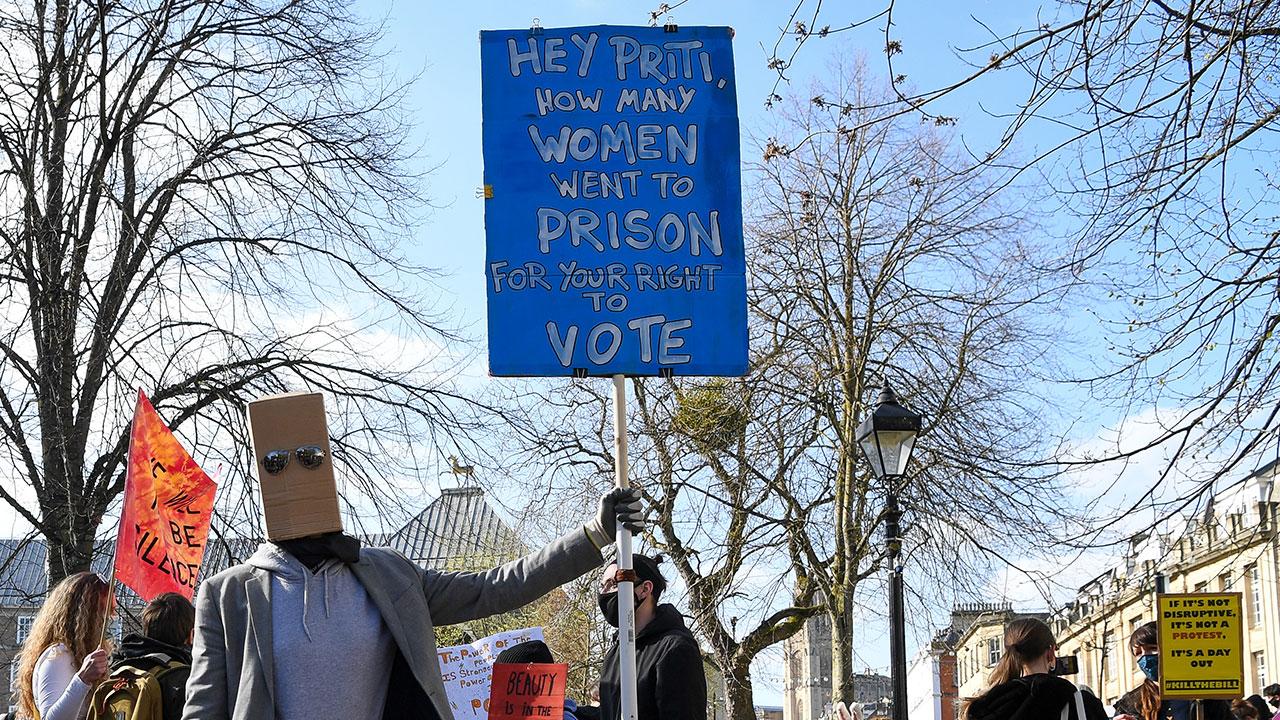Silent Acting
As tension mounts in the run-up to Trump's inauguration, Jörg Heiser considers how artists can galvanize political protest
As tension mounts in the run-up to Trump's inauguration, Jörg Heiser considers how artists can galvanize political protest

Looking back over the grim year that was 2016, two incidents sparked a glimmer of hope. On Sunday 3 April 2016, in churches across Poland, priests read out a letter from their bishops calling for the prohibition of abortion, without any exceptions. The minute they did so, women of all ages – and some men, too – stood up and walked out. The clips that appeared online were powerful: proof of a simple, silent act of protest that resonated around the country and beyond. Nevertheless, a proposal for a blanket ban on abortion was brought before the Polish parliament. On 3 October 2016, thousands of Polish women boycotted work and study and – dressed in black – marched in protest. The wind stirred by the April action had turned into a mighty storm, hashtagged #CzarnyProtest (#BlackProtest). And the storm was so vast and all-encompassing that the ruling right-wing Law and Justice party (PiS) had to back down on the proposed anti-abortion bill.
Two things struck me about these protests. Firstly, they employed strong performative elements, such as co-ordinated acts of standing up and leaving, or visual markers, such as everyone wearing clothes of the same colour. Secondly, I can’t think of comparable protests in Germany in the wake of far-right mobs agitating against refugees, nor in Britain after the sharp rise of hate crimes post-Brexit. Why was the struggle in Poland so politically and aesthetically effective? The concerted church action reminded me of an event co-organized in December 1989 by ACT UP, the AIDS awareness activist group founded two years earlier. Thousands gathered outside St. Patrick’s Cathedral in New York to demonstrate against the Catholic church and its condemnation of homosexuality, HIV prevention and the right to abortion. During mass, dozens of activists lay down silently in the aisles for a ‘die-in’. Documented on video, the scene is a palpable reminder of how the church’s opposition to safe-sex education had a very real impact on people’s mortality. Equally symbolic was the ‘Ashes Action’ that took place in Washington D.C. in 1992, which involved protestors hurling the ashes of their loved ones who had died of AIDS over the fence onto the White House lawn.
ACT UP created striking scenes and images, which were recorded on video and disseminated via media channels. It was also an inclusive movement: street kids, go-go dancers, Wall Street brokers and social workers all took part alongside artists and intellectuals. A generation later, in the introduction to her book The Gentrification of the Mind (2012), the writer Sarah Schulman, a key figure in ACT UP, talks about going out for a drink with six young queer writers and artists. She shares a sobering observation: ‘As artists, as well as queers, these people wanted to be able to think in radical ways [...] They admired their predecessors who had created change through confrontation, alienation and truth-telling. But their professional instincts led them in different directions: accommodation, social positioning, even unconscious manoeuvring of the queer content they did have so that it was depoliticized, personalized and not about power.’ It is encounters like these that led Schulman to write her book, positing that it is gentrification – the homogenization of neighbourhoods – which has fuelled ‘an internal replacement that alienated people from the concrete process of social and artistic change’. It’s hard to verify whether Schulman’s assertion about those young artists (she doesn’t mention their names) is fair; but, more generally, she certainly has a point, thinking about how – in the face of the dramatic swing to the right that many countries have experienced lately – counter-protests have not been sufficiently sustained and concerted. Except in the US, following Trump’s election, and in Poland.
So who actually co-ordinated the Polish protests? By all accounts, they were instigated, in collaboration with other groups, by a young progressive party, Razem (Together), which was founded in May 2015 out of dissatisfaction with the postcommunist left. According to the British economist Guy Standing, in a recent interview, it is ‘the first authentic movement in Poland that is representing the precariat’. From what I can gather, a number of Polish artists are sympathetic to, if not actively working with, Razem. Though the party has an anti-hierarchical policy of not naming members or leaders, it is not unreasonable to suggest that artists may have contributed substantially to the way these protests were organized. Perhaps, despite Schulman’s pessimism, the historic knowledge of how to create silent acts and potent images of disobedience that mobilize people has not been entirely lost. At a time when civil and minority rights seem more at stake than we might have anticipated only a few years back, that wisdom is sorely needed. If you have it, why not share it?
Main image: Wire hangers were a widely used symbol in the Polish pro-choice campaigns because of their association with illegal and unsafe abortion. Courtesy: Tony Maj and Getty Images.























